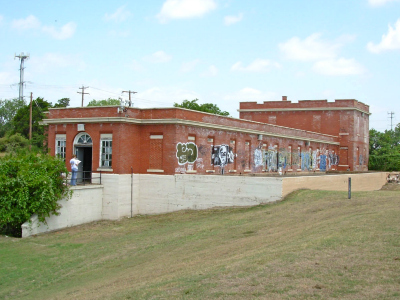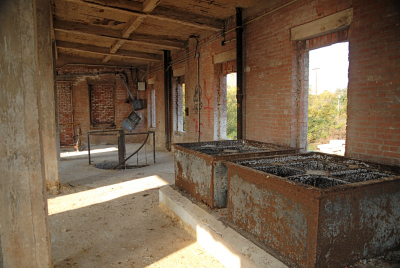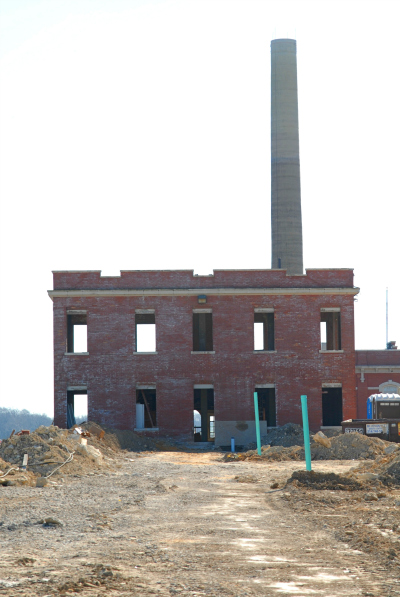White Rock Lake construction began in 1910 when Dallas was
experiencing water shortages. The dam and coal-fired pump house,
built on White Rock Creek, was completed in 1911. The creek
initially ran through undeveloped countryside and farmland and
the spring-fed water was pure enough to drink.
The lake filled rapidly and the pure water was pumped directly
into city water mains with no filtration or chlorination. It
didn’t take long for Dallas citizenry to discover and enjoy the
recreational benefits of the newly completed oasis. Human
contact; swimming, fishing, duck hunting and even construction
of weekend shacks on stilts over the lake were permitted and
negatively influenced water quality.
In about 1915, notices began appearing in the Dallas Morning
News advising East Dallas residents to boil their tap water
before drinking or cooking with it!
The Filter Building and Sedimentation Basins were then
constructed in 1922. Water was allowed to flood into the
sedimentation basins from the lake where sand, mud and other
debris settled out. The water was next allowed to flow through a
serpentine channel below the Filter Building where chlorine was
added and dissolved from a mixing plant on the second floor.
The water next flowed through six pairs of sand filters located
in the basement of the building, then through an enormous
eight-foot diameter pipe to the adjacent pump house. These
waterworks exist today beneath the Filter Building.
White Rock Lake water was used by the City for many years, but
the construction of the many lakes in North Texas; Lakes Dallas,
Lewisville, Grapevine, Towakoni, Cedar Creek and Hubbard in the
1950’s, supplanted White Rock and its aging equipment. The
facility was closed; the sedimentation basins filled and the
Filter Building doors and windows bricked closed in 1963.
Woodrow Wilson high school students still managed to sneak into
the basement and the initials and names of several current
Lakewood residents may be found “graffiteed” on the walls below.
In 2003, the competitive sport of rowing on White Rock Lake
consisted of SMU Women’s Crew and a Highland Park High School
Club team rowing from facilities in the Bath House basement.
John Mullen, the founder of the Dallas Rowing Club and Sam
Leake, a cycling and triathlon coach at the Tom Landry Sports
Medicine and Research Center who was also teaching basic rowing
lessons on the lake, founded a 501(c)3 charitable corporation,
the White Rock Boathouse, Inc. to extend high school crew to
DISD students and introduce recreational and competitive rowing
to Dallas adults.
The historic but abandoned water works were leased from Dallas
Water Utilities, $2.7 million was raised privately and the
facilities were restored and adapted for rowing. The Filter
Building was restored and renovated into an event venue whose
net revenue supports the White Rock Boathouse outreach rowing
programs. From our mission statement;
Operated by the 510(c)3 charitable corporation White Rock
Boathouse Inc., The Filter Building event venue is the latest
addition to our facilities. Rental income from The Filter
Building supports programs of the Boathouse; community outreach,
juniors rowing, and adaptive rowing for the disabled, including
veterans.

Photo © Sam Leake

Photo © Sam Leake

Photo © Sam Leake